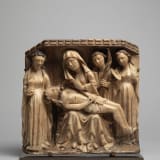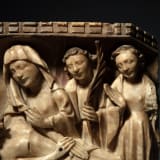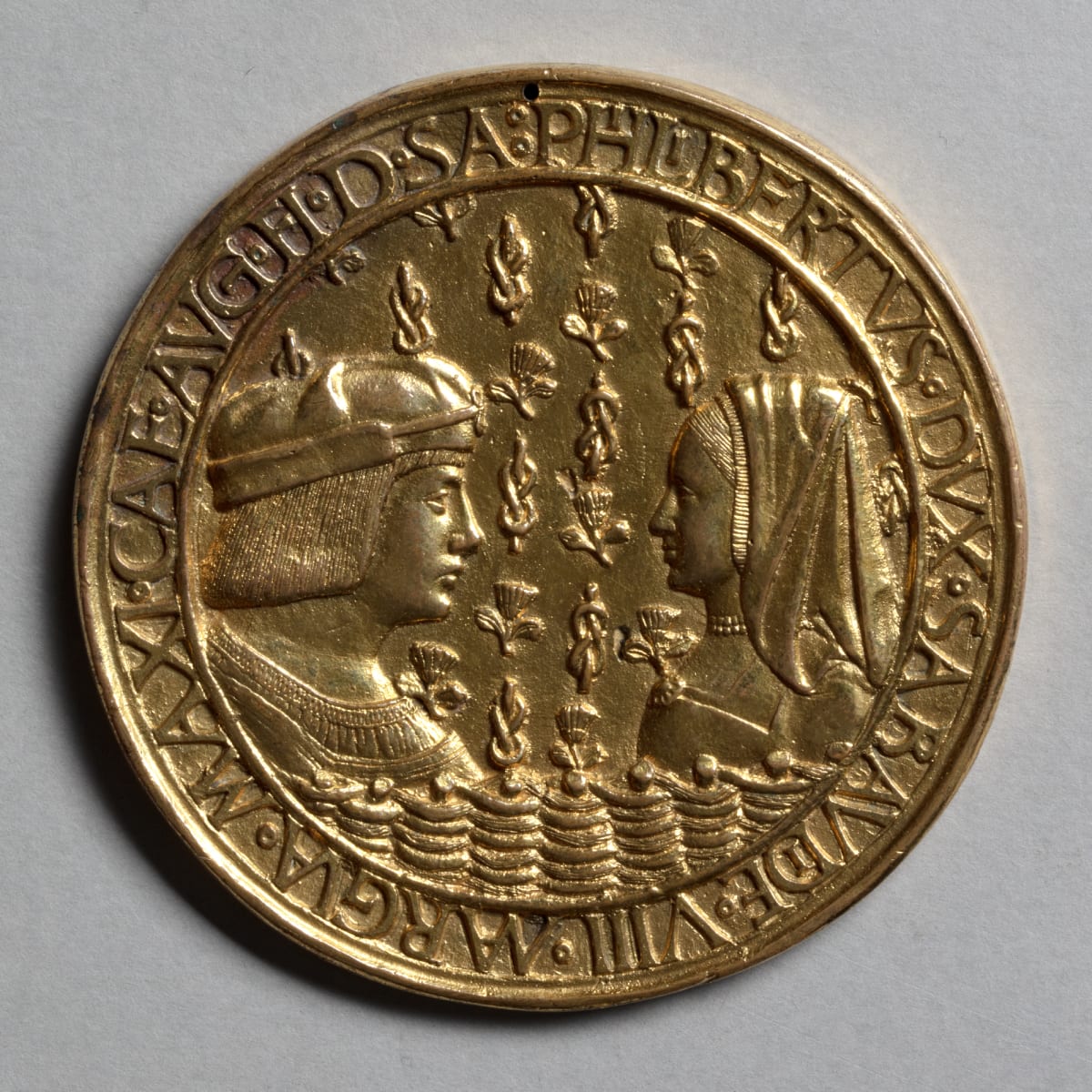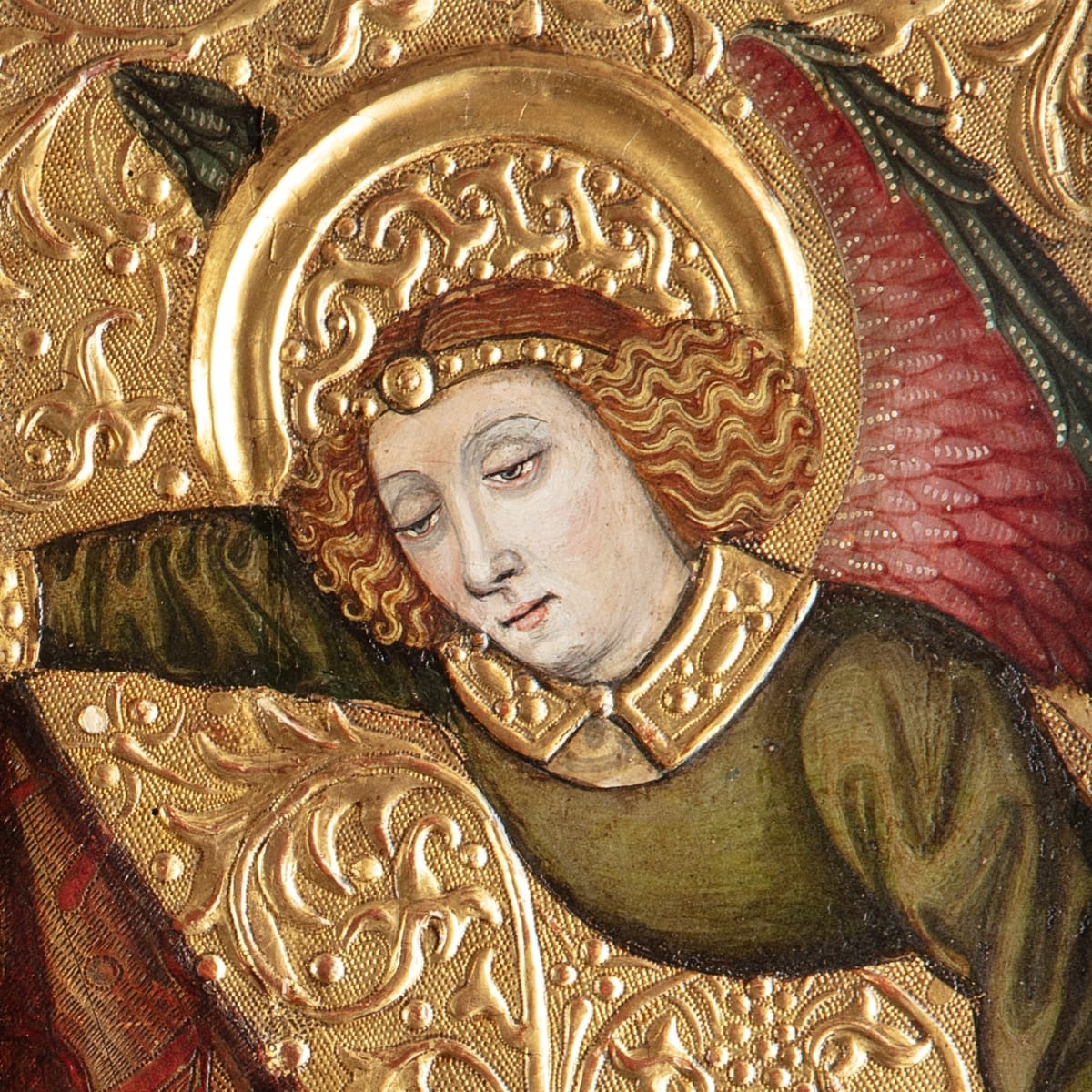


The Lamentation
Beneath the heavy crenellated mouldings of a three-sided canopy, the Virgin Mary sits on a low bench with the body of her son lying moribund across her lap. She supports his head, still crowned with thorns, and draws one edge of her veil across her chest with her free left hand, a gesture evocative of distress and the evident need to dry her tears. Proportionally she dominates the composition and is the largest figure of the entire group, dwarfing, despite being seated, the accompanying figures of a youthful Saint John holding a palm branch and the two ointment-bearing women who stand at either edge of the relief, bookending the group. She alone has a large circular halo scribed behind her head, and her form is framed by a rich cloth of honour, once gilded, which further singles her out as the focus of the scene.
For most Christian devotees living in the fifteenth century, the inclusion of women holding ointment jars in any image depicting the Lamentation would have been an instantly recognizable shorthand for the process by which Christ’s wounds are believed to have been ritually cleansed and anointed following his death and in the process of his burial. They tend to appear in the hands of the various Maries (Magdalene, Salome, Cleophas) who, according to three of the four Gospel accounts, attended Christ’s tomb in order to assist in the preparation for his burial and in the guarding of his body. The ointment pot thus becomes a symbol for the whole idea of devotion and piety itself, and as the Middle Ages drew to a close its depiction became increasingly entwined with the notion that a good Christian attitude could be borne out by contemplating how one would respond personally to Christ’s sacrifice by caring for his body as the three Maries had done – with devotion, piety, and charity (and excising this attitude in daily life through thought, deed, and prayer). But the two ointment pots shown on our relief take on further significance because of the very material from which they are carved – alabaster. Even before Christ’s death, Mark’s Gospel account of the meal said to have taken place in the house of Simon the Pharisee recounts how Mary Magdalene anointed Christ’s feet using a covered pot which he identifies very specifically as ‘an alabaster box of ointment of spikenard very precious’. It could hardly be more fitting.








